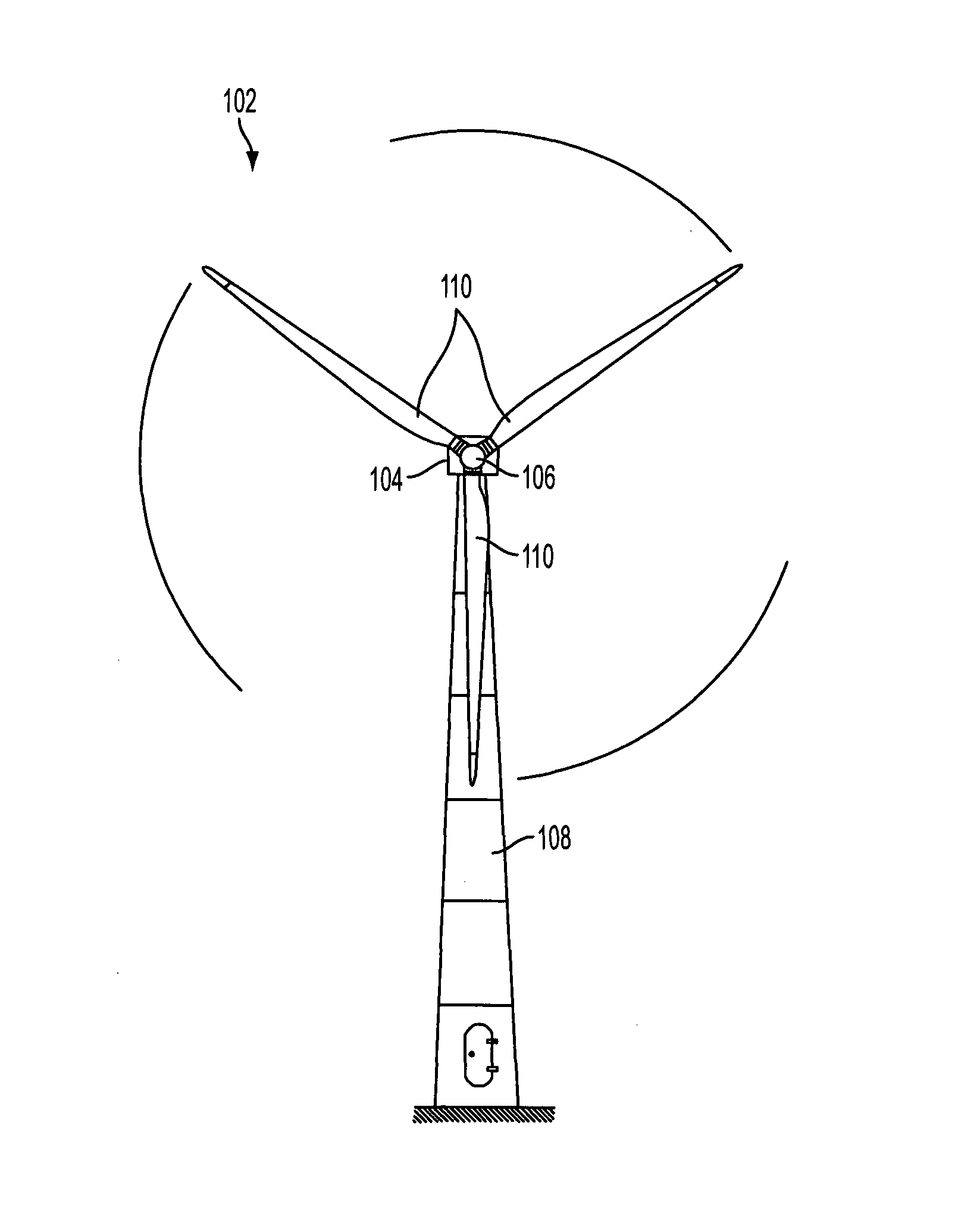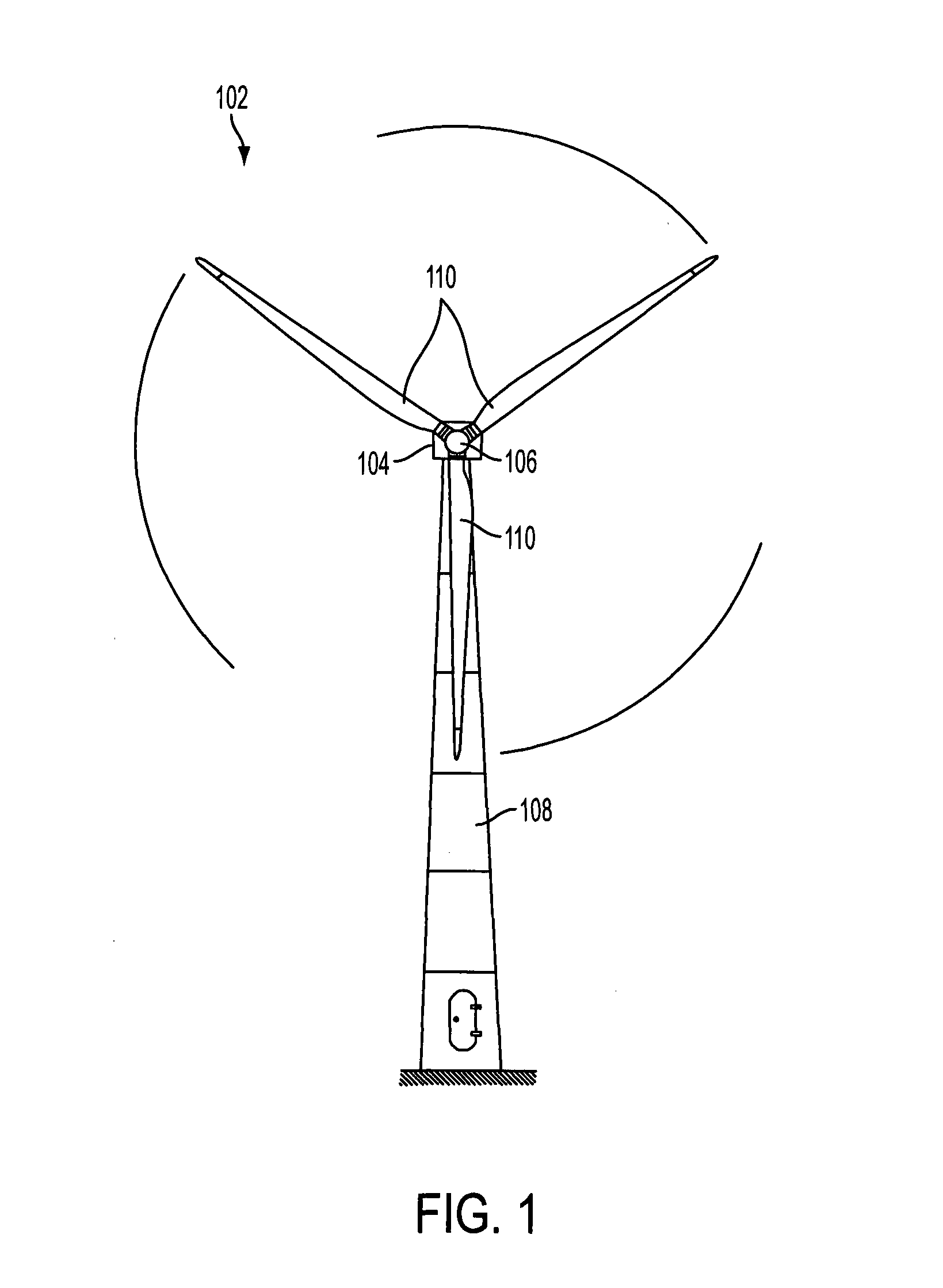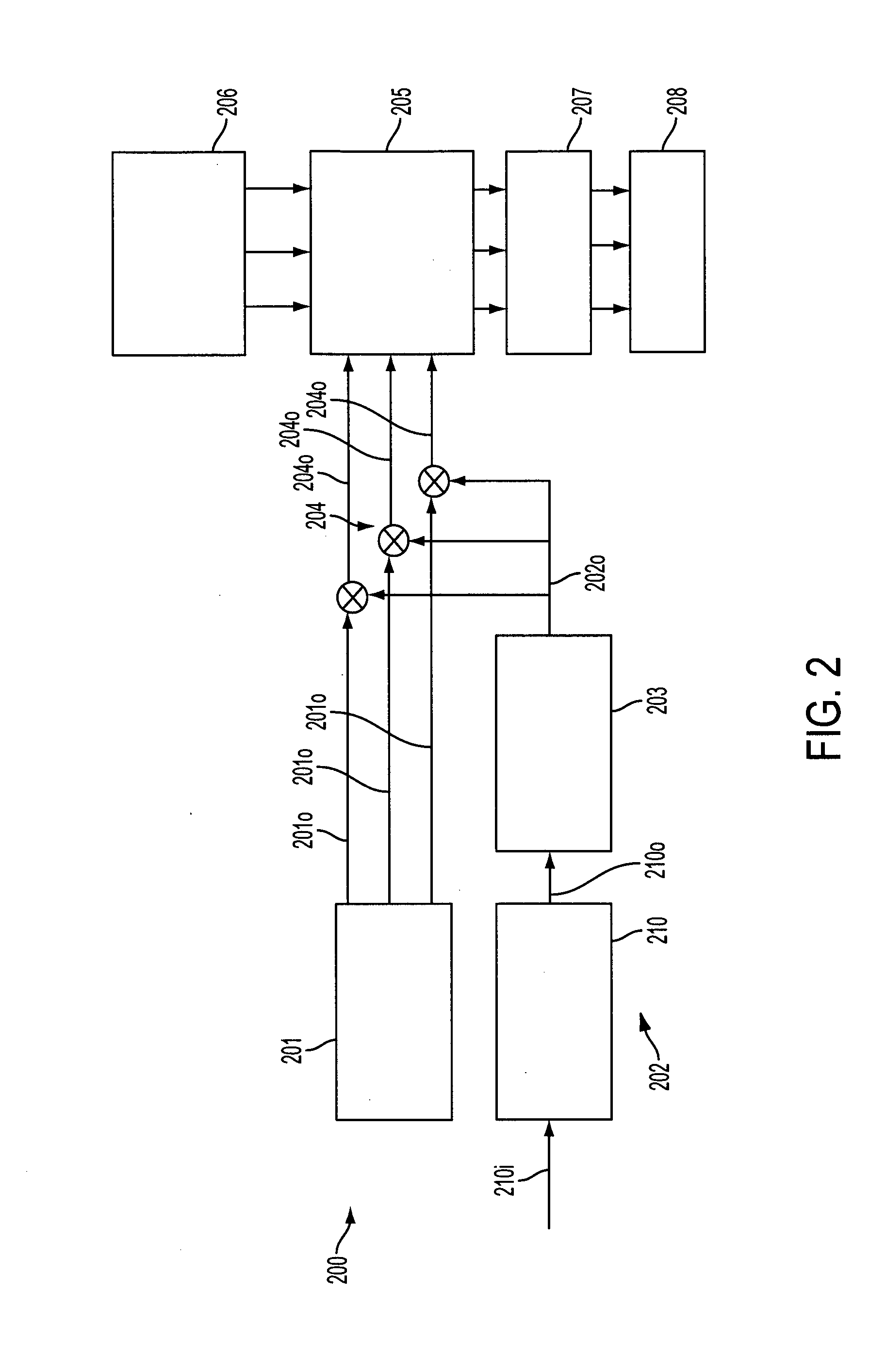Operating a method for a wind turbine
a technology of wind turbine and wind power, which is applied in the direction of motors, engine fuctions, propellers, etc., can solve the problems of inhomogeneous wind field, prone to oscillation of tower and rotor blades, excitation and forces perpendicular to the rotor axis, etc., and achieve the effect of damping the oscillation of the tower
- Summary
- Abstract
- Description
- Claims
- Application Information
AI Technical Summary
Benefits of technology
Problems solved by technology
Method used
Image
Examples
Embodiment Construction
[0026]FIG. 1 shows a wind turbine 102 with a nacelle 104, and a rotor hub 106 pivotally mounted to the nacelle 104 via a rotor shaft. The rotor shaft extends from the rotor hub 106 facing away from the viewer and is therefore not shown. The nacelle 104 is mounted on a wind turbine tower 108 via a rotary joint. The wind turbine tower 108 is connected to ground at its root at the opposite end to the nacelle 104. The rotor hub 106 of the wind turbine includes three wind turbine blades 110 attached to the rotor hub 106. The rotor hub 106 is adapted to rotate about its axis of rotation, which is aligned to an axis of rotation of the rotor shaft, such that the rotor blades 110 sweep a rotational plane substantially perpendicular to the axes of rotation. The axes of rotation are essentially parallel with respect to ground, i.e., parallel or tilted by a tilt angle of some degrees with respect to ground. The tilt angle is the angle of the axis of rotation of the rotor shaft of the wind turbi...
PUM
 Login to View More
Login to View More Abstract
Description
Claims
Application Information
 Login to View More
Login to View More - R&D
- Intellectual Property
- Life Sciences
- Materials
- Tech Scout
- Unparalleled Data Quality
- Higher Quality Content
- 60% Fewer Hallucinations
Browse by: Latest US Patents, China's latest patents, Technical Efficacy Thesaurus, Application Domain, Technology Topic, Popular Technical Reports.
© 2025 PatSnap. All rights reserved.Legal|Privacy policy|Modern Slavery Act Transparency Statement|Sitemap|About US| Contact US: help@patsnap.com



